Theo Verelst Local Diary Page 106
This page is copyrighted by me, and may be read and transferred by any
means only as a whole and including the references to me. I
guess that's normal, the writer can chose that of course.
Oct 8, 19:00, 2011
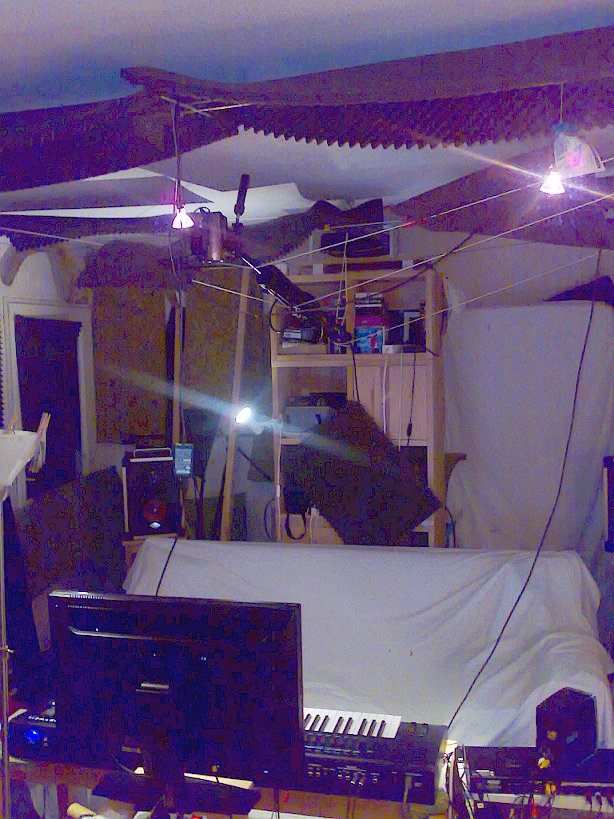
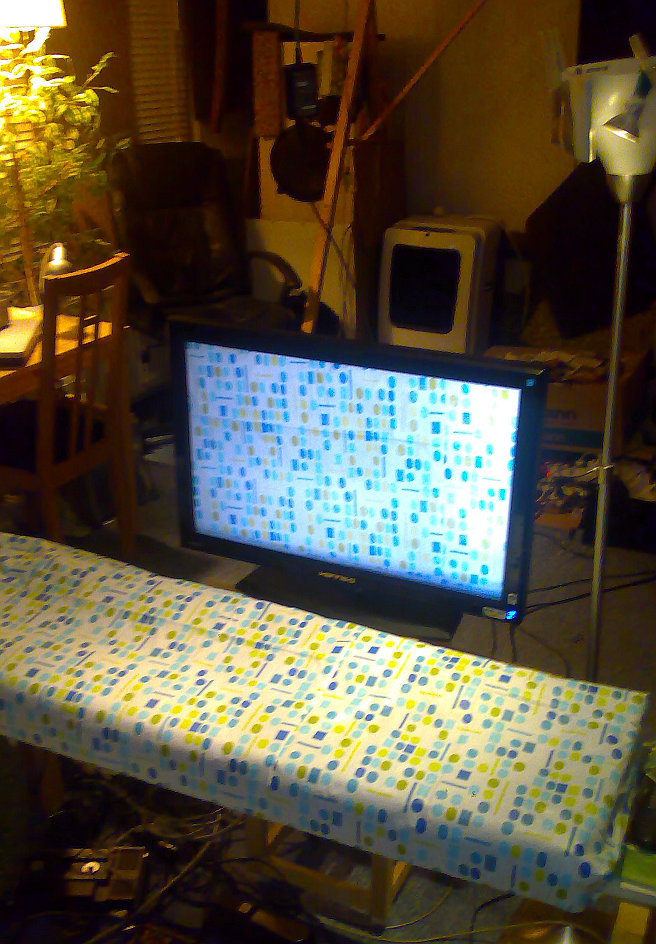
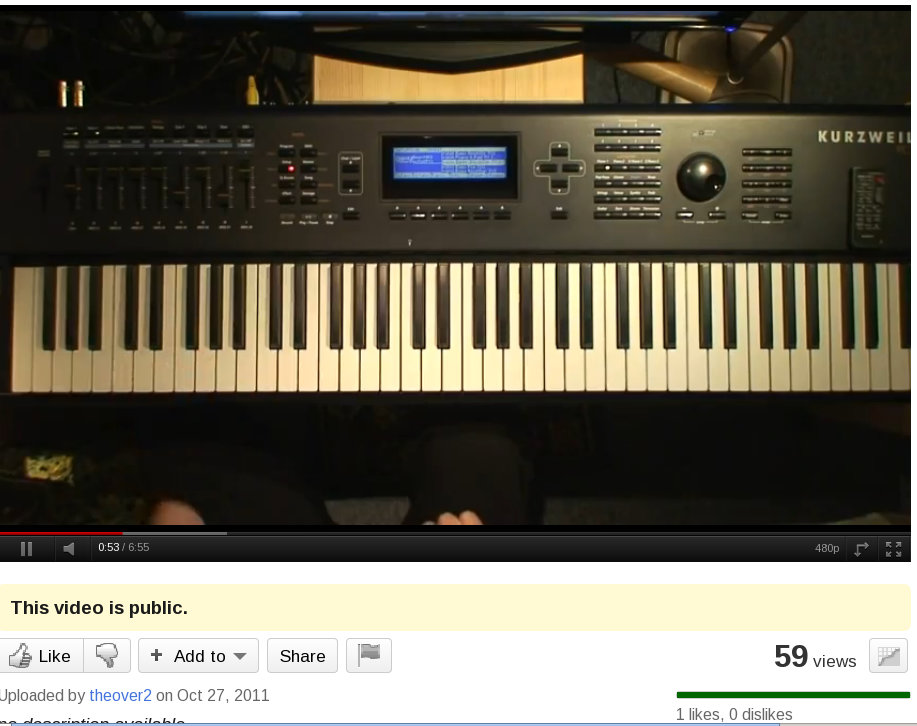
Click on the image above for one of the youtube hosted recordings made
like indicated. The videos were converted to 10mb/s h264 using ffmpeg
with vdpau decoding. Audio is from analog output of the Kurzweil
straigt into the peamp of my big audio system recorded by the HD cam,
no processing or editing.
192 Kilo Sample per second converted Blu Ray sound tracks

Latest rented ones, 7 for 10 a week, including the Tarantino
"Inglorious Basterds"
I also tried decoding uncompressed digitied TV sound in 192kHz sample
format, which is pretty nice most of the time, of course depending on
channel properties. Adding Lexicon surround reverb to that (the 4
channel in 4 channel out variation from the MX400) is getting there
where it is acceptable to listen to it a whole movie from various seats
and can actually start to get nicely adjusted, starting with low values
for spread and shape.
Fully wireless High Definition Satellite
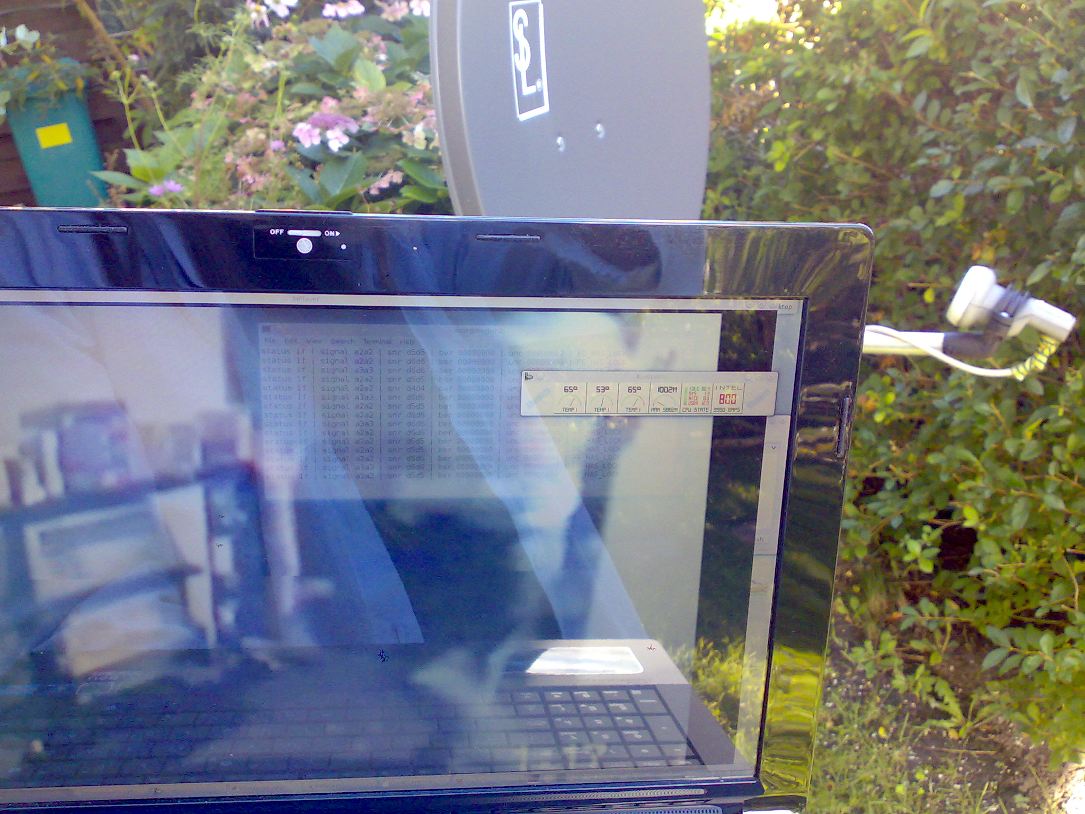
Essentially I used the fat wireless connection of the I7 notebook on
Linux (Fedora 16-alpha, 64 bit) with the new internet modem wireless
connection (which I put only "on" when I use it) and connect over the
ethernet to the sat receiver media machine connected with the dish in
the picture above. A linux kernel program receives the ITV-HD
12megabit/sec signal, sends it too the notebook over the wireless using
two tcl scripts and the notebook decodes the signal and displays it in
full HD, which looks neat. Also I can now log in the media machine, and
run a signal analizer program which is now visible as a transparent
window (I use KDE) when I bring the notebook outside to adjust the
antenna. Works cool, batteries last I think an hour and a half while
viewing, without getting too hot.
Still the VDPAU cannot be used, just like the NVIDIA GT540m (very fast)
graphics acceleration. I tried running bublebee, the nvidia driver and
some of the nvidia kmod libraries, but none of that gets the graphics
cards picture switched to the built in lcd. I can even make the
sandybridge I7 put a simultaneous HD picture over the HDMI but the best
I had with nvidia card is that the startup sequence from X windows
indicates succes and that there is some screen attached (but not that
it is HD like it is) but the screen remains black and there is no
furter succes and some 640x480 minimum size. I put the nvidia driver
(the most recent) of and went back to the standard X startup, which
gives nice sandybridge graphics at HD size. But now deinterlacing and
420p too rgb processing needs to be done by the I7 processor, which it
does nicely with some of the -vf mplayer (ffmpeg based) filters with
-vo x11, but temporal averaging and elaborate colorspace corrections
are much stronger with VDPAU and don't always work fast enough for HD.
Like with the phone+notebook+ipad example, the wireless signal from the
notebook didn't interfere noticably with the sat reception, and neither
did the nearby wireless 3.5G phone, all worked simultaneously with no
problems within a meter from eachother...


This is the same machine with KDE with wireless network, showing an X
window based TV channel coming over the gigaether link without
compression, from two different sources (put on the same screen):

Signal Processing Galore ?

The I7 notebook
runs some good number of jack plugins and also connects correctly to
the other machine over ethernet, for instance to share the load of
running all the processing or to get a 192kHz 32 bit feed from the
server disc with 4500+ CD songs:

KDE still has the nice transparent windows.

Aes Lecture
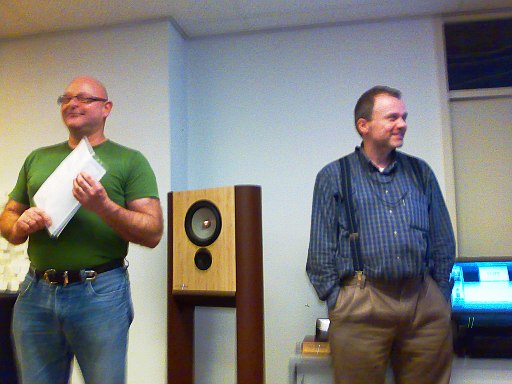
about switching amps
(Tcl script used for creating 2/3 size screendumps with click to
original:)
set s Ldi106/Scr
foreach i [glob $s/*.png] {
puts "<a href=\"$i\"> <img src=\"[file rootname $i].jpg\"> </a><br>\n"
# exec pngtopnm $i | pamscale -filter=sinc 0.666 | cjpeg -q 85 -pro -dct float -outfile [file rootname $i].jpg
}











